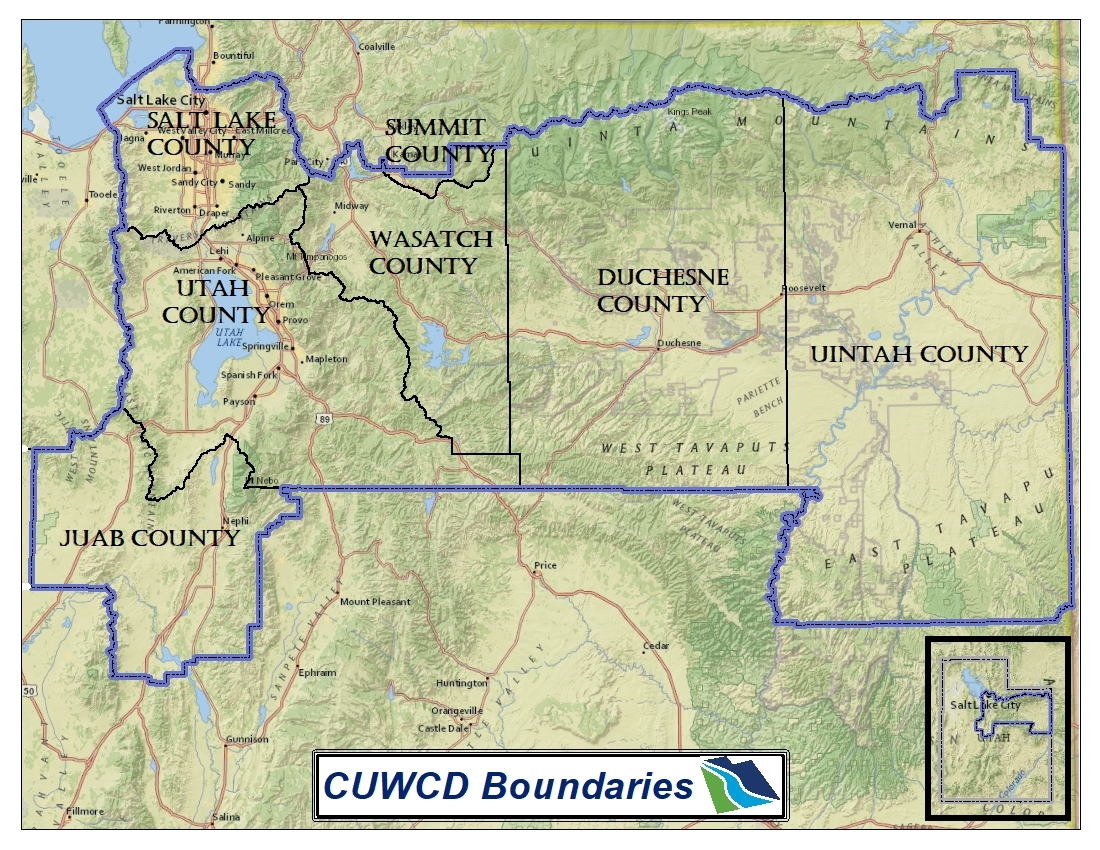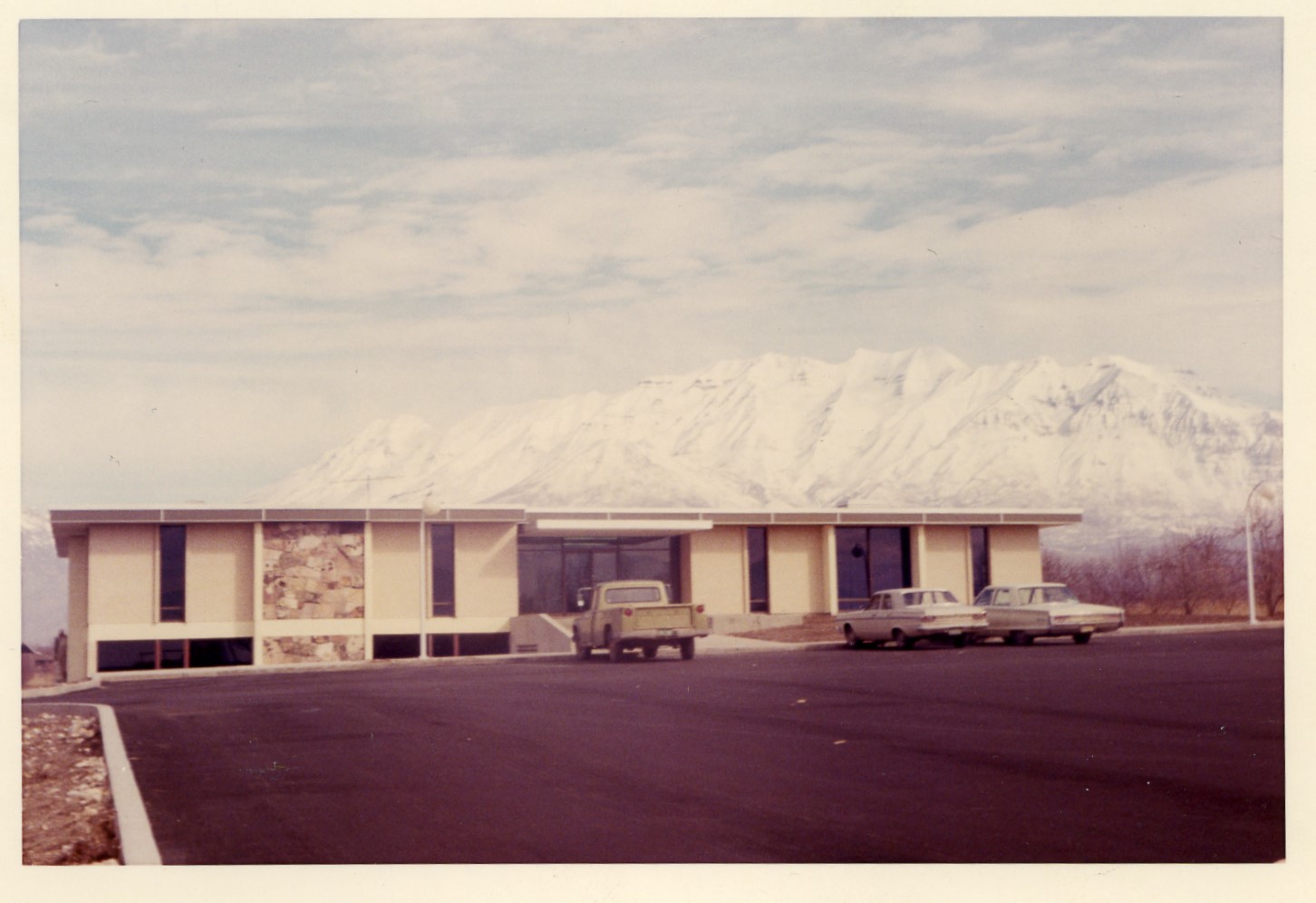-
Group photo of CUWCD Employees at prior headquarters, 2024
About Us

Central Utah Water's primary responsibility is to deliver clean, useable water to our customers by managing the vast Central Utah Project (CUP) and District network of water facilities. Every day we work to maintain and improve those systems. We monitor and track precipitation levels and make decisions on how best to serve current customers and store water for future generations. We work with large water users to develop ways to use water more efficiently and host the public at activities promoting conservation. We operate three water treatment facilities, two hydroelectric plants and nine reservoirs and administer the sale of water to customers in seven counties.
Central Utah Water is proud of its role in managing the water in its jurisdiction and using technology, intelligence and hard work to ensure the best possible balance for man and nature.B

History
When the Latter-day Saint pioneers first entered the Salt Lake Valley their first priority was to divert part of City Creek to irrigate fields for planting. As the new territory was settled, new settlements sprung up where there was a water supply. As the population grew the demand for water exceeded the ready supply from mountain streams and the need for storage facilities became apparent.
The vision of bringing water from the Uintah Mountains to the Wasatch Front is attributed to an early Utah State Engineer, Abraham Fairbanks Doremus. He proposed the idea in 1902 in response to a severe multi-year drought. His vision was ahead of his time. The state simply did not have the resources to build a project of that size. Over the decades, technology and engineering advances made the project more feasible but huge financial and political hurdles still had to be overcome.
Construction of the project, which became known as the Central Utah Project ("CUP"), didn't start until 1967 after the Central Utah Water Conservancy District ("CUWCD" the "District") was formed as the local repayment agency, responsible for distributing CUP water and funneling payments back to the U.S. Treasury. It is important to note that without the revenue stream authorized by the state legislature (property tax authorization), the repayment mechanism, the project would never have been approved. Originally the project was under the auspices and control of the federal Bureau of Reclamation (BOR). Cost overruns, delays and new environmental legislation threatened to leave the project unfinished as Congress lost interest in western water projects and President Carter put the CUP on his infamous "hit list".


Prospects for the completion of the project were bleak in the late 80's and early 90's. After several years of intense work by Don Christiansen and Marcus Faust, a compromise bill, The Central Utah Project Completion Act ("CUPCA") was passed in 1992 and was signed into law by President George Bush Sr. The bill was a drastic departure from the old way of building federal projects and was the first time that a project had been taken from the jurisdiction of the BOR and the responsibility of construction given to the local project sponsor, in this case Central Utah Water Conservancy District. It was the first bill of its kind in the country. The District works directly with the Department of Interior ("DOI") CUPCA program manager who in turn reports to the Assistant Secretary of Interior. Along with the responsibility of building the project, CUPCA also imposed preconstruction payment obligations of up to 35% on the District and required that 90% of the water be subscribed for prior to construction. There were also environmental mitigation obligations to restore any environmental damage that may have occurred as a result of the construction of the project.
In 1965 and again in 1985, District patrons were asked to approve the use of property tax to pay for the development of their water. Both ballot measures passed with overwhelming majorities. Clearly, the people of the District were anxious to shoulder the burden of building and paying for the project that would provide water for the future of the Wasatch Front. Their investment paid huge dividends in the early 2000's. Project water that had been stored in district reservoirs saved the Wasatch Front from severe water shortages. Those same reservoirs helped prevent massive flooding in 2011 by taking the "peak" off of a record breaking runoff.
In 2005 the District purchased the water rights that had been used to make steel at the Geneva Steel Plant on the east side of Utah Lake. Those water rights combined with other District surface and ground water rights make up the 53,300 acre-feet of water that are part of the Central Water Project ("CWP"). While the CUP is a federal project, the CWP is the District's project that will take water to the growing area west of Utah Lake in Utah County and to south west Salt Lake County. Without this water supply the new communities located in that area would not have water for their future. While this District project will be completely paid for by user rates and fees it could not have been built without the property tax revenue stream that has enabled the District to finance the project at a favorable interest rate.
The future of the District mirrors the future of the people it serves, it is full of opportunity and challenges. The "easy" water has already been developed. Population growth, which formerly occurred in areas where there was an existing water supply, is now happening in areas that desperately need water. Conservation is an important part of the picture but is limited in the amounts that can be counted on for the future. Future development is essential if Utah wants to provide opportunity for its future generations.
